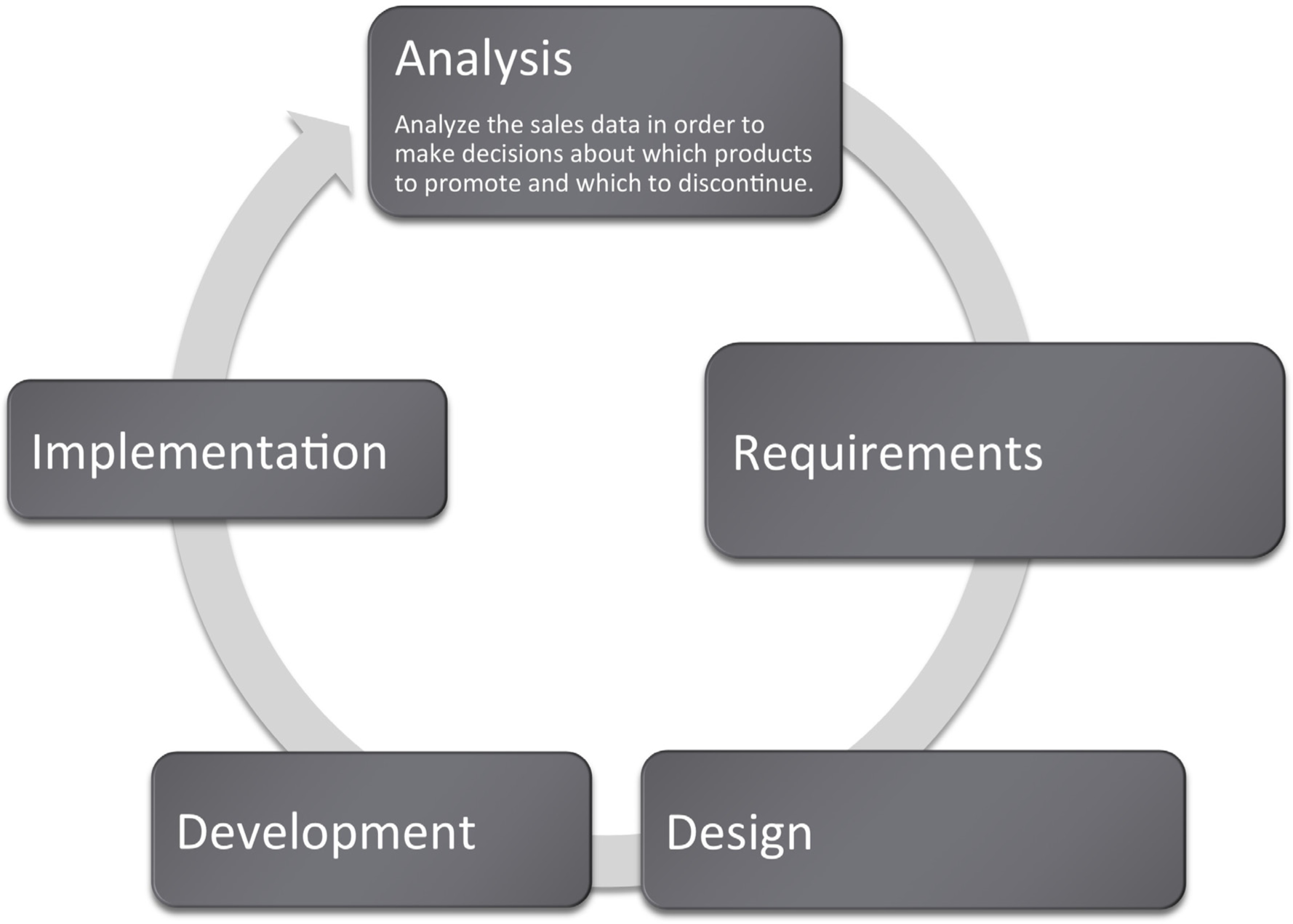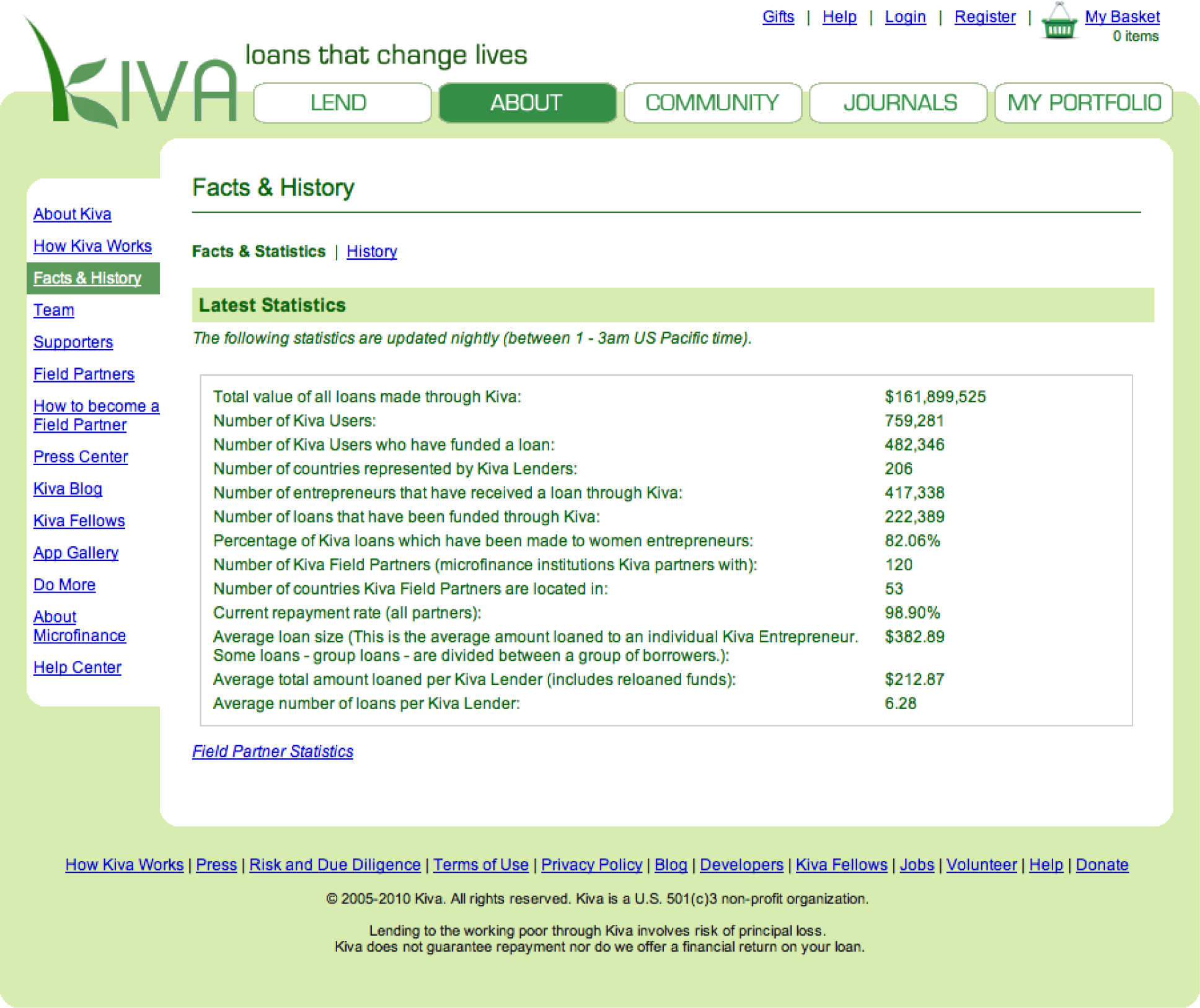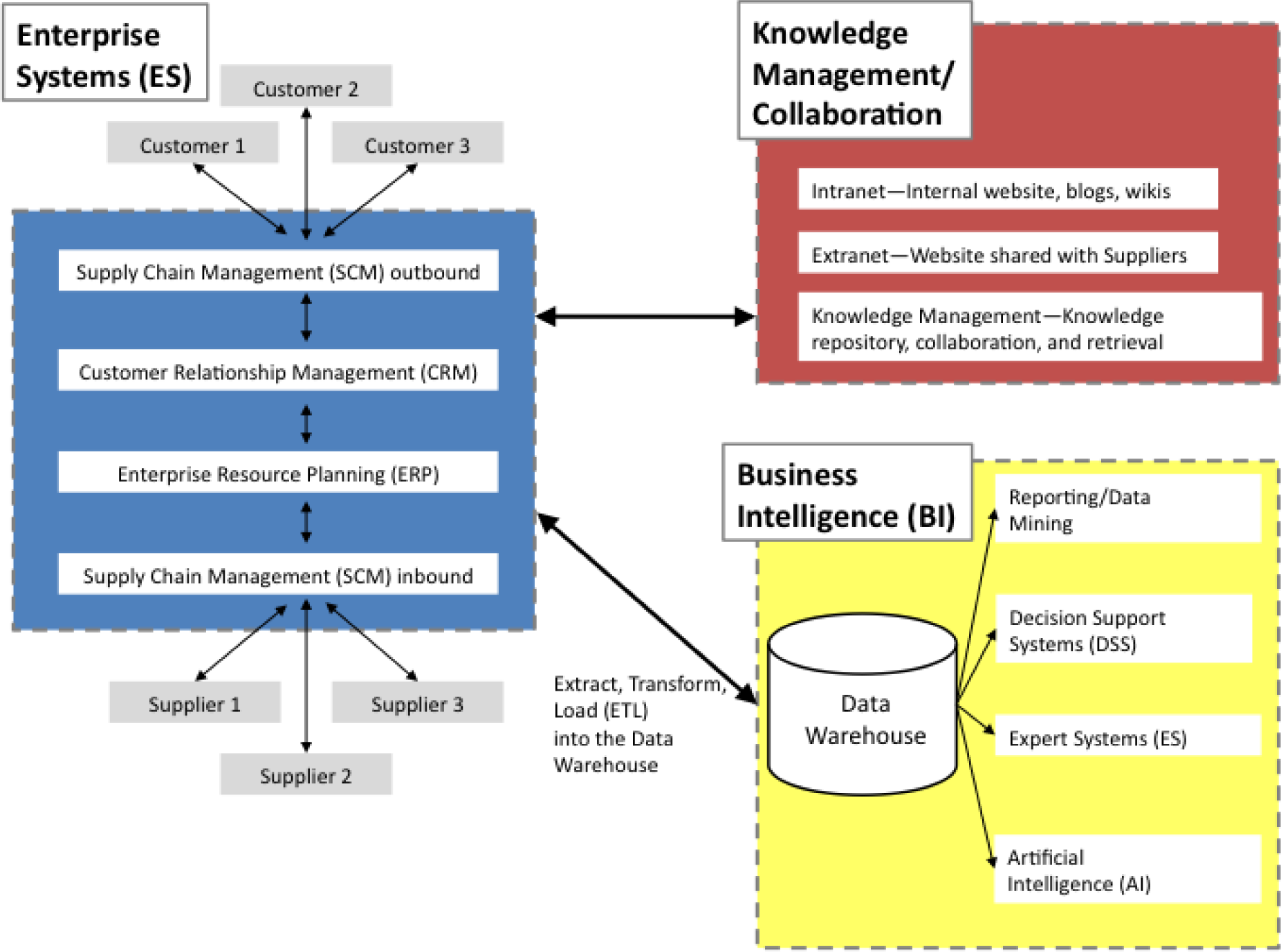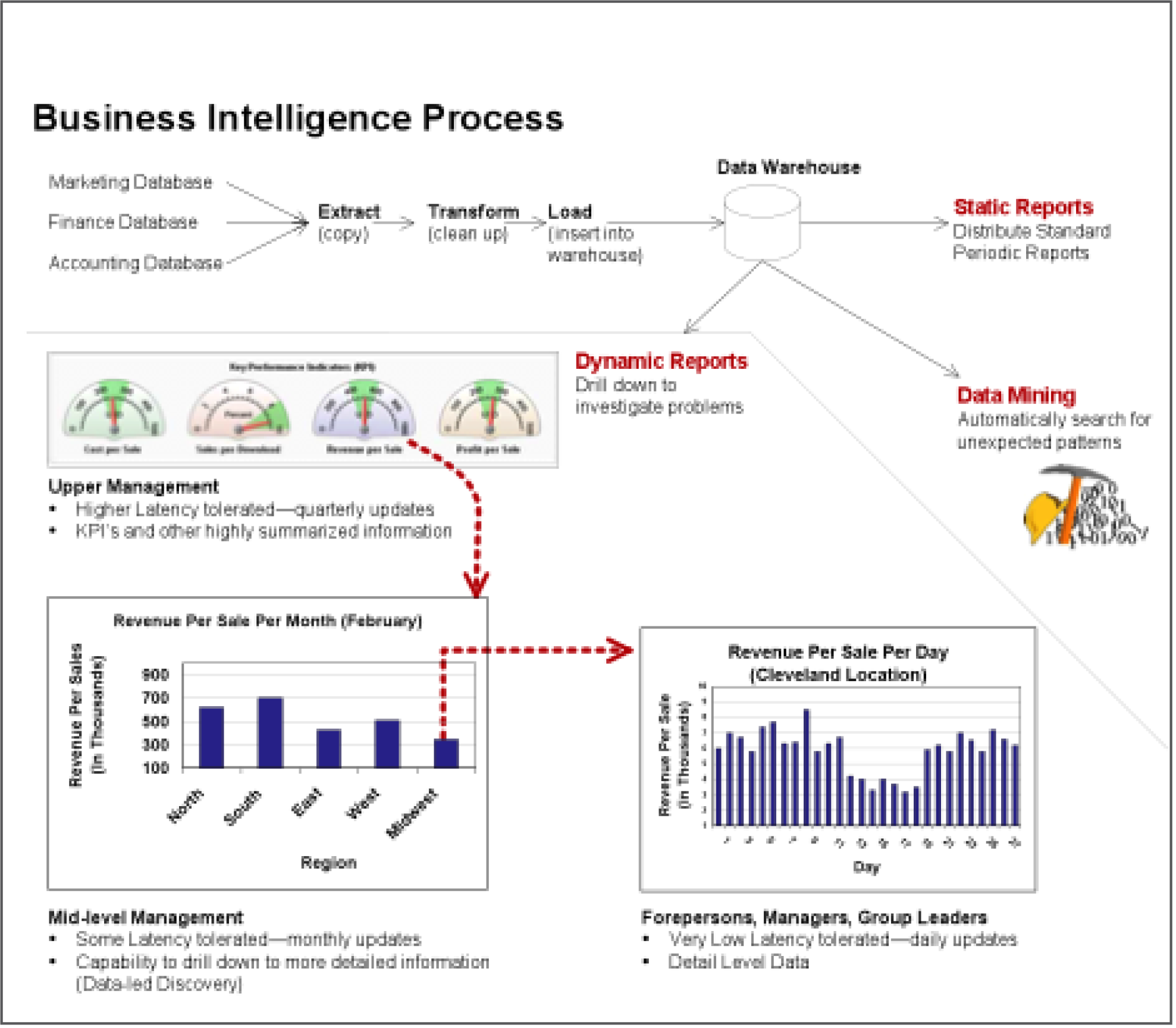This is “Business Intelligence”, section 10.1 from the book Designing Business Information Systems: Apps, Websites, and More (v. 1.0). For details on it (including licensing), click here.
For more information on the source of this book, or why it is available for free, please see the project's home page. You can browse or download additional books there. To download a .zip file containing this book to use offline, simply click here.
10.1 Business Intelligence
Learning Objectives
- Query sales data to spot meaningful trends
- Distinguish between static reports, dynamic reports, and data mining
- For a given situation, determine what type of business intelligence report is required to solve the problem
Introduction
In order to make strategic decisions about which products to feature in our store, we need to carefully analyze the sales and clickstream data. This type of data analysis is one form of business intelligence.
If there is one thing plentiful in the world today, it is data. At the heart of every information system is a database that captures transactional data. For example, who bought what, when, for how much, and so forth. It is useful to know about the architecture of the transactional systems so that it is not a complete mystery how the data is captured.
However, it is critical to know how to distill and analyze the captured data in order to make managerial decisions. For example, after summarizing thousands of records we might find a product selling particularly well with women in a particular age range living in a particular area. That meaningful information could be actionable in terms of the supply chain and marketing initiatives.
If anything in the world today there is perhaps too much data. Distilling that data into meaningful information is a key skill. There are a number of tools available to perform data analysis. These include spreadsheet programs such as Excel and database systems such as Access. Learning to use these tools will enhance your marketability.
Where Are We in the Life Cycle?
Many information systems projects are conceived of in a life cycle that progresses in stages from analysis to implementation. The diagram below shows the stages that we touch in the current chapter:

Kiva: Summarize Data to Produce Information
To illustrate the power of summary data, we will first show how it can be used as a marketing vehicle for a website. Impressive statistics can help encourage repeat business. The same marketing principles operate even for nonprofit organizations.
Kiva is a website that lets you make small loans (typically under $500) to entrepreneurs in developing countries. The field of small loans is called microfinanceMaking very small loans (typically under $500) to entrepreneurs in developing countries. Most loans are repaid in six months to a year.. Microfinance institutions are an incredibly important resource to help third world citizens rise out of poverty. Surprisingly, the repayment rate of the world’s poor ranges from 95 to 98%, far higher than the loan repayment rate in the United States. Over 80% of Kiva’s loans are made to female entrepreneurs. They invest profits back into the businesses and improve the lives of their families.
Kiva works by pooling resources so that for example 50 people could lend $10 each to total $500. As part of its marketing effort Kiva maintains fast facts about their activities to date. For example, they report that they have nearly half a million lenders who together have lent $161 million dollars over the last three years. These fast facts are gathered from the website’s database after scanning millions of records and represent business intelligence. Not only does the information serve a marketing purpose, but it is also an internal scorecard to track the progress of Kiva’s mission and influence decisions.

Kiva’s Facts and History page is a business intelligence report. Note the sentence that appears under “Latest Statistics,” which announces that the statistics are updated nightly (between 1 - 3 am). This is typical of business intelligence systems. Searching millions of records puts such a drain on the system that these activities are usually run during off peak hours.
What Is Business Intelligence?
The Kiva example is a form of business intelligenceThe delivery of accurate, useful information to the appropriate decision makers within the necessary time frame to support effective decision making. . Business intelligence (BI) is the delivery of accurate, useful information to the appropriate decision makers within the necessary time frame to support effective decision making.
By this definition all the work we have done with Excel would qualify as business intelligence since our deliverables contained accurate and useful information to support effective decision making. However, business intelligence is commonly understood to include distilling and analyzing large data sets such as those found in corporate databases. Extracting and analyzing information stored in databases is the subject of this chapter. It is very likely that at multiple points in your work career you will be asked to engage in just this type of analysis.
Business intelligence is part of the big picture information systems architecture. Most systems in existence can be classified either as enterprise systems, collaboration systems, or business intelligence systems. The enterprise systems—taking orders for example—feed their data to the data warehouse, which in turn is queried to support business intelligence.
From a managerial standpoint, there are three factors necessary to make an effective decision:
- Construct a set of goals to work toward.
- Determine a way to measure whether a chosen path is moving closer or farther from those goals.
- Present information on those measures to decision makers in a timely fashion
For example, let’s say our goals are to develop a clothing business that produces high quality products while lowering costs. We further determine that we will measure product quality by the percentage of products rejected by inspectors at each station. (Think about those inspector 99 tags that you find in pockets of your new clothes. The clothes you are wearing are the ones accepted by the inspector.) A relatively high rejection rate is a red flag to management requiring further analysis. Is this an overzealous inspector? Is there any pattern to the rejected products? Does one station in the factory tend to produce more rejects than the others?
We also need to see performance over time. Is product quality improving or getting progressively worse?
Let’s say that our analysis determines that the high rejection rate comes from just one factory in Southeast Asia. We report the problem to management. They dispatch a team to review the plant. The review discovers child labor, abusive conditions, and very low morale at the plant. The horrible conditions are quickly reversed and the rejection rate returns to average.
Business Intelligence: Analysis of App Sales Data

The business intelligence portion of the information systems architecture. Note that business intelligence systems typically operate off of a data warehouse—a repository of data for the corporation. Each enterprise system contains one or more databases. The contents of those databases is routinely copied into the data warehouse to enable the BI analysis. The process of copying is called extract, transform, and load (ETL).
Business Intelligence Process
We will look at three types of business intelligence—static reports, dynamic reports, and data mining.
Static reportsA form of BI reporting with which we are most familiar—summary reports distributed at regular intervals. are by far the most common form of business intelligence. Most businesses have summarized standard reports already laid out and printed to assist in managerial decision making. For example, universities use enrollment reports to gauge which departments might need to hire more faculty. Credit card companies will request reports of persons with high credit scores to target credit card promotions. Similarly, the companies might target college students with good future earning potential. Marketers might look at sales figures for different stores and regions to determine where there are opportunities to run a sales promotion.
Dynamic reportsLook like standard reports but with a major difference. They are interactive and allow the user to drill down to discover the source for the summary numbers. look similar to static reports but online and interactive. A manager curious as to where a certain summary number on his dashboardA high level management overview of the data—sometimes depicted using dials and needles similar to an automobile dashboard. In a car you might not need to know your exact RPMs but you do need to know if you are red lining. Similarly, upper management might not need to know exact sales figures but they do need to know if sales are out of the normal range. comes from can drill downThe process of uncovering the numbers that contribute to creating a summary number. Drill down is like being shocked at your ATM balance and then calling the to get a list of the withdrawals and payments made against your account. to expose the detail that contributed to that number. In essence it is a fact finding tour where information discovered in each step gives clues on where to search next for information. For example, if sales in North America are down, then drill down to discover a problem in the Midwest region. Then drill down farther to discover a problem in the Cleveland, Ohio plant.
Data miningThe process of fishing for patterns in the data using computing power because you really do not know what to look for. uses computer programs and statistical analyses to search for unexpected patterns, correlations, trends, and clustering in the data. In essence, it is fishing through the data to see if there are patterns of interest. One often cited example of data mining was the discovery that beer and diapers are frequently purchased on the same trip to the grocery store. Upon further inquiry marketers discovered that Dad picks up some beer on his trip to the grocery store to buy diapers. Marketers can use this information to place the two items in close proximity in the store.

The business intelligence process for dynamic reports is depicted here. The top half of the diagram shows how data finds it way into the data warehouse through the extract, transform, and load process. The dynamic report begins with an executive dashboard providing a high level view of the business. The dashed red arrows represent drilling down to find a reason for a pattern in the data. In this example, a downturn in North American sales is traced all the way back to a Cleveland, Ohio plant.
Key Takeaways
- Business intelligence is a way of uncovering trends and patterns in corporate data that might have strategic or operational significance.
- Most corporations already have the data that they need for business intelligence. However analyzing the data, presenting the results, and then following through on where the data leads, separates the winners from the losers in a competitive environment.
- Static reports, dynamic reports, and data mining are three different forms of business intelligence.
Questions and Exercises
- Managers are often most interested in exceptions—data that does not fit pre-established expectations. Describe how business intelligence can aid in this process.
- Why do lower level managers require higher level detail in their information?
- In what ways does fantasy football rely on business intelligence?




